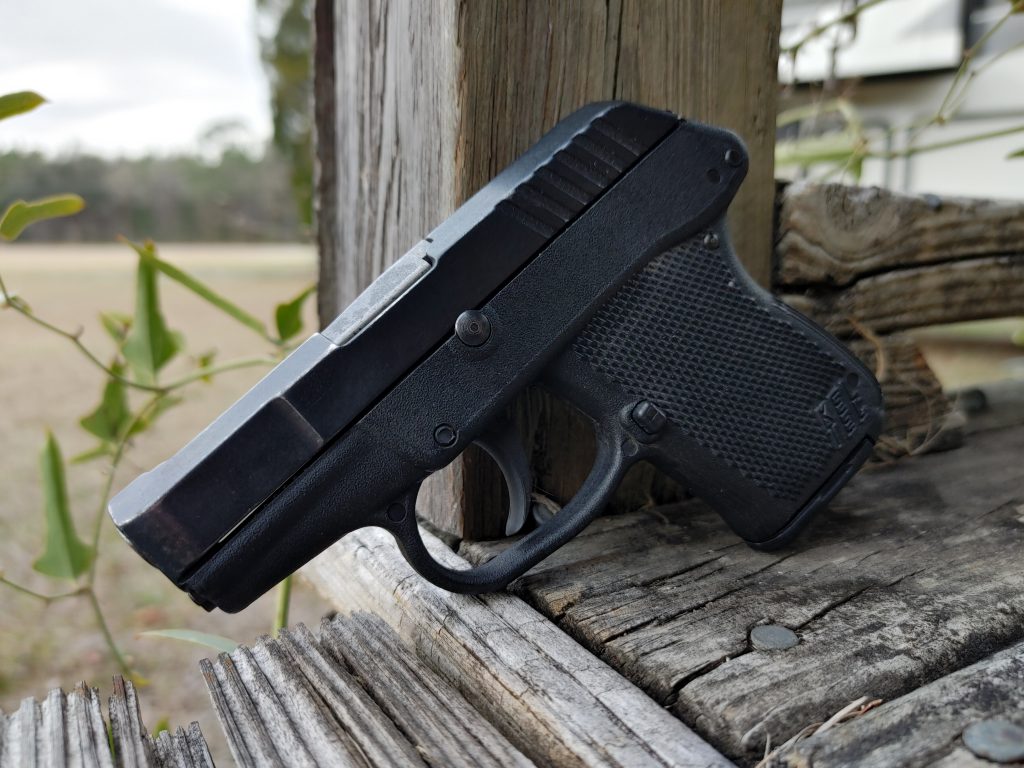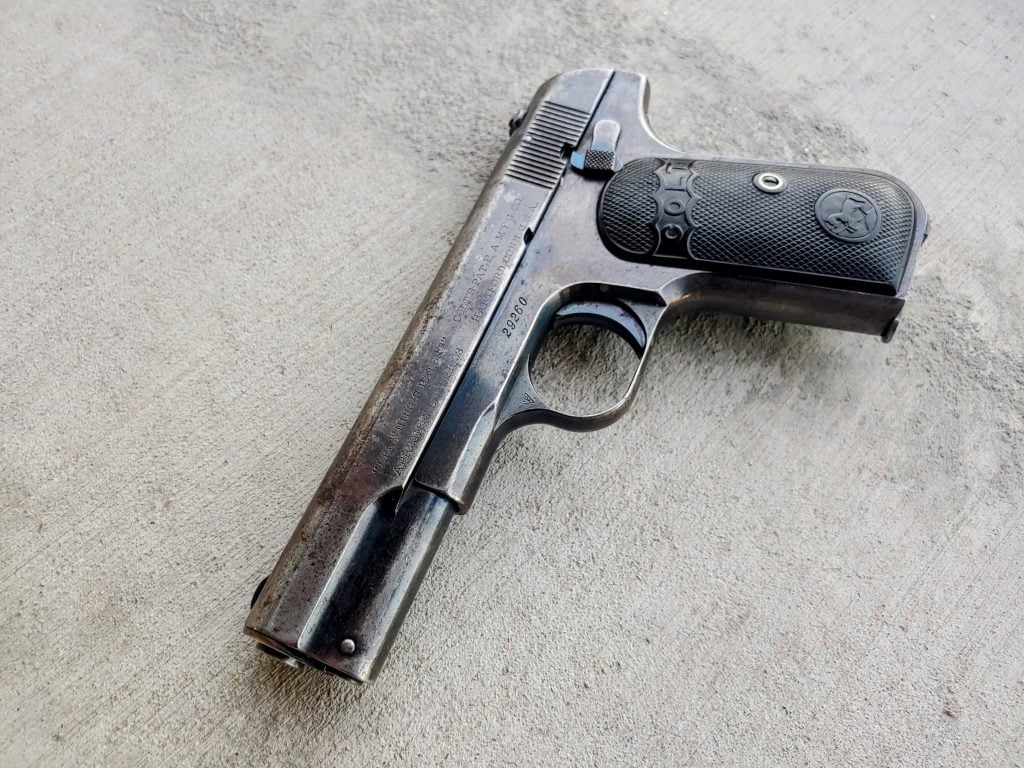Before the single stack 9mm and then the Micro Compact genre of pistols, the concealed carry world was ruled by the .380 ACP and the pocket pistol. KelTec started it with the P3AT, and Ruger, S&W, Diamondback, and many others followed suit. The typical pocket .380 ACP was truly pocket-sized, dang near just palm-sized. These guns were super small and ultra-lightweight. They were very easy and convenient to carry. Pocket .380s became the dominant force in concealed-carry guns, which made them exceptionally popular.
Yet, I’ve never been a fan. For numerous reasons, and even as a backup piece, the pocket .380 ACP just isn’t for me. In fact, I don’t think it’s a great option for a wide variety of shooters. I’d go as far as to argue it’s one of the worst options on the market for the average shooter. In fact, I’ll use the rest of this article to explain just why I came over to that way of thinking.
The Usual Pocket Pistol Reasons
We all know pocket pistols have their limitations. There is some argument over what exactly a pocket pistol is, and many would consider a Walther PPK a pocket pistol. However, when I say it, I mean guns like the Ruger LCP, the S&W Bodyguard, and the Keltec P3AT.

These guns tend to be small and hold maybe seven rounds if you’re lucky. They are limited in their capacity. Smaller guns have a shorter sight radius, and they can be tough to shoot accurately. Most pocket .380 ACP pistols are double action only, making them even tougher to shoot due to their long trigger pull.
Those reasons are good reasons to dislike any pocket pistol. However, I don’t necessarily dislike pocket pistols in their entirety. I just dislike it when they are chambered in .380 ACP. I think the combination of an ultra-small pistol tied to the rather large .380 ACP is where things start to fall apart.
Performance Issues
When you fire a .380 through a 2.75-inch barrel, you aren’t getting the best performance from it. The cartridge often comes in jacketed hollow point configurations, but most shooters would be wise to avoid them in a pocket pistol. Either the round will expand and slow down the already slower-moving round, or it won’t be capable of expanding because it won’t reach the proper velocity.

In fact, you’d often be better suited with FMJs for reliable penetration from these ultra-small guns. That’s not exactly fantastic, but pistols mostly just poke holes anyway. Expansion is nice, but a good shot to the vital regions will stop a threat with or without it. The problem is that we already have calibers that reach the vitals with FMJs.
The little .32 ACP, for example, can meet the same penetration requirements as the .380 ACP with FMJs. With .32 ACP, you can squeeze in one extra round and get less recoil. Why did we settle on .380 ACP? Because at the time these pocket pistols first hit the mainstream, the gun-buying public still largely believed in stopping power. In their minds, the bigger the bullet, the better. The old .380 was the biggest bullet we could fit in the smallest pistol.
.380 ACP Isn’t Made for Pocket Pistols
Speaking of the fact that the .380 ACP sucks in pocket pistols, we should have known that by examining the guns the .380 worked best in. To do that, we step back to 1908 when John Moses Browning created the cartridge. He wasn’t creating it for a Vest Pocket pistol of the era, which would be the equivalent of our modern pocket pistol.
Although, he was creating it for a Pocket Pistol, specifically the Colt Model 1908 Pocket hammerless, yep, I’m aware of the fact that pocket is in the name, and it seems odd to bring this gun up. Realize that the pockets must have been a bit bigger. The “Pocket” term referred to the compact nature of the gun as it applied to the guns of the era.

The Colt Model 1908 Pocket Hammerless was no average pocket pistol. It had a 3.75-inch long barrel, was 6.75 inches long, weighed 24 ounces, and was 1.2 inches wide. It’s not that far off from a Glock 19. Guns like the Colt Model 1908, the Walther PP, the FN M1922, and the vz. 38 were not pocket-sized but were compact when compared to the duty revolvers and M1911s of the era.
The new and old versions of the Cheetah 80 series are perfectly sized, as is the S&W Shield EZ series. I’d argue the smallest acceptable .380 ACP would be the Glock 42. People criticized the Glock for its size, but it honestly made sense and is one of the easier shooters in this genre.
.380 Pocket Pistols — the Juice Isn’t Worth the Squeeze
The main thing I hate about these little guns is the recoil. It’s pretty vicious. I’m a fairly experienced shooter, and even I hate shooting these things. I’m not recoil-sensitive, but little .380s tend to slap. Dealing with recoil is one thing, but dealing with the gun trying to fight its way out of your hand isn’t something worth dealing with often.

When I shoot these little guns, the grip typically moves a fair bit in my hand between shots. This makes accurate and efficient follow-up shots difficult. The hand-beating recoil also makes it a pain to train with, literally. I’m willing to deal with recoil, to learn to get faster on those follow-ups if there is some advantage I’m receiving.
The thing is, the juice isn’t worth the squeeze with .380s. I can get similar performance on a threat with other rounds that don’t have the same recoil and difficulty associated with them.
Alternatives to the .380 ACP
The little .380 has certainly taken a slight backseat to 9mm handguns, but it’s still around. As are pocket pistols. With that in mind, let’s say you want a pocket pistol. Which calibers should you look into?
.32 ACP
I already mentioned this little bugger. The .32 ACP would be my go-to for a pocket pistol. It can reach the depth necessary to put a threat down with FMJs. It has less than half the recoil energy of the .380 ACP, and you can typically get a spare round.

.22LR
Yep, the famed rimfire round can penetrate deep enough to stop a threat. Although, you have to pick specific ammunition to get the correct depth. In guns like the LCP 2 in .22LR, it’s a great round. It’s super soft recoiling, and in modern guns, you can get 10 rounds in a pocket-sized gun. The downside is the fact it’s a rimfire cartridge, and rimfire will always be a little less reliable than centerfire cartridges.

.380 Pocket Pistols — Just Say No
The .380 ACP is a mean little cartridge, and that goes in both directions. It’s capable, but to me, it’s not designed to be used in pocket-sized pistols. It’s very clear from its origins that it fits more into the compact origin than the micro-sized, polymer frame pistol. So, it’s great in the Beretta Cheetah 80X but not so great in Beretta Pico.

